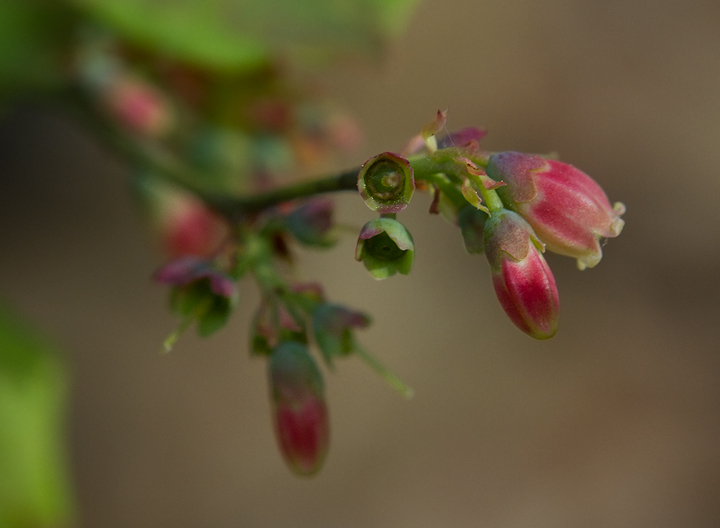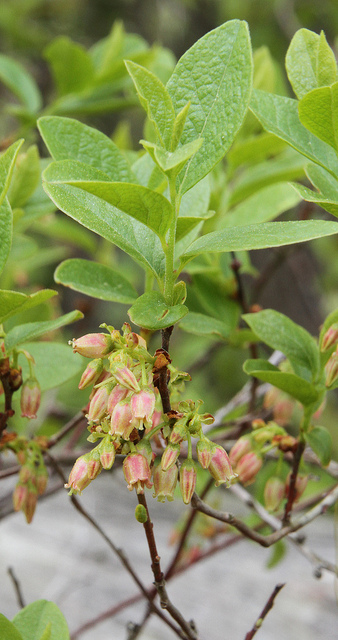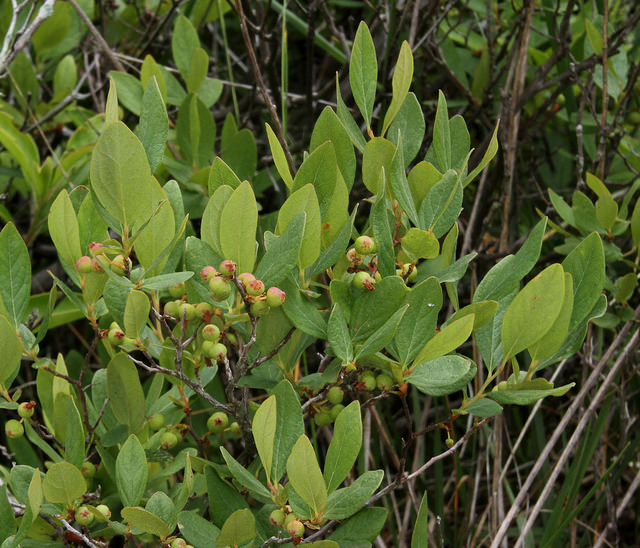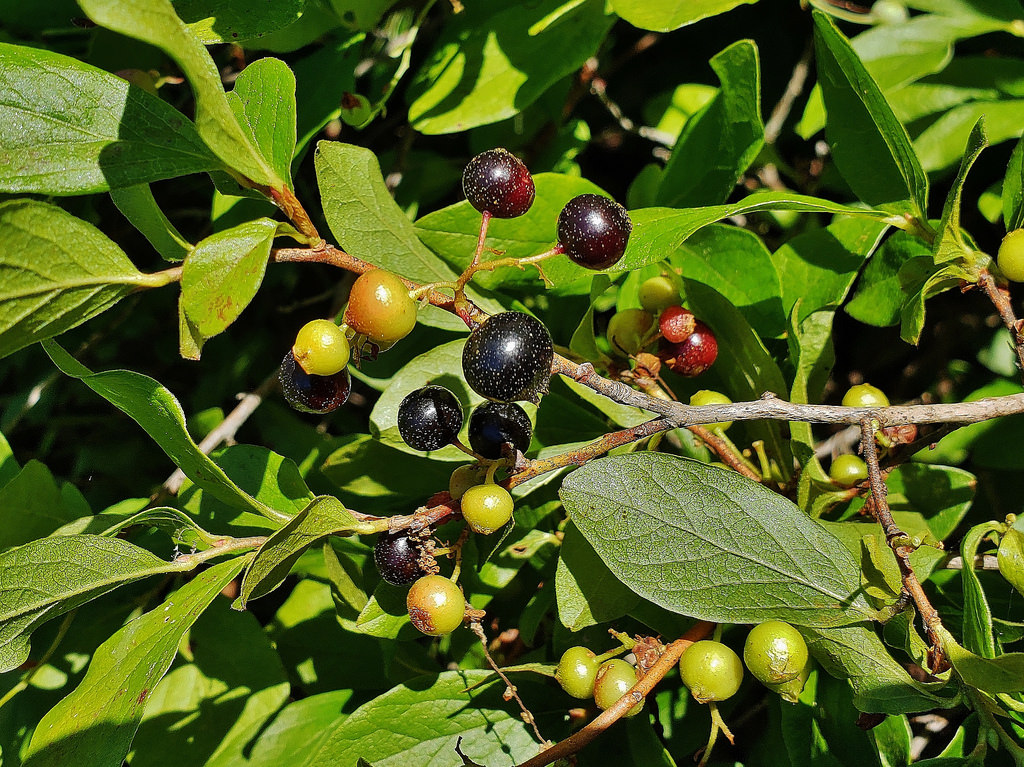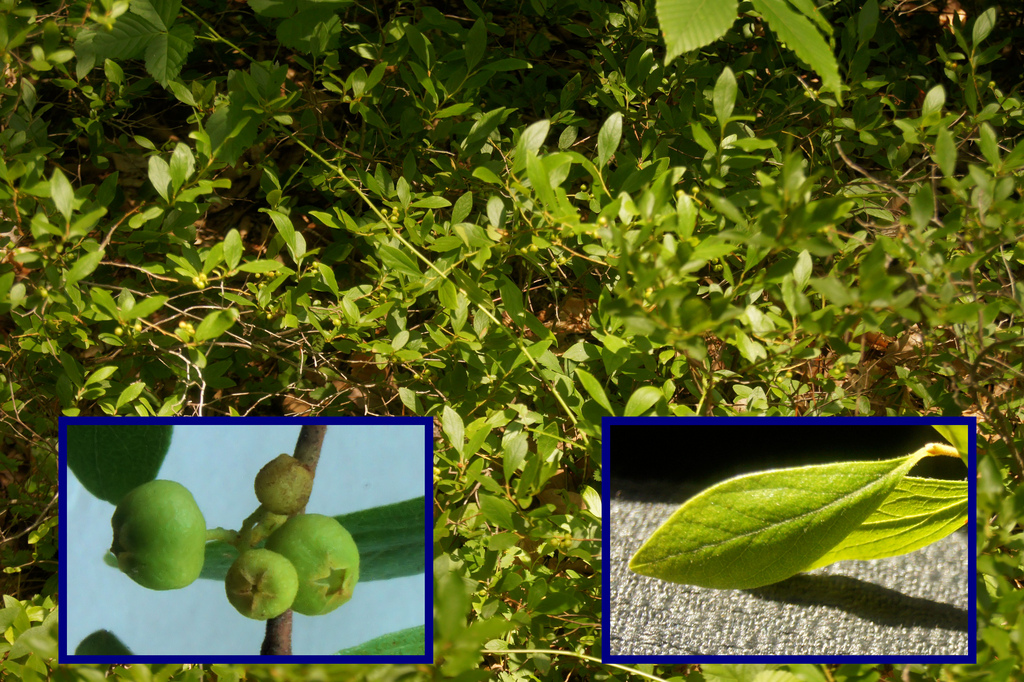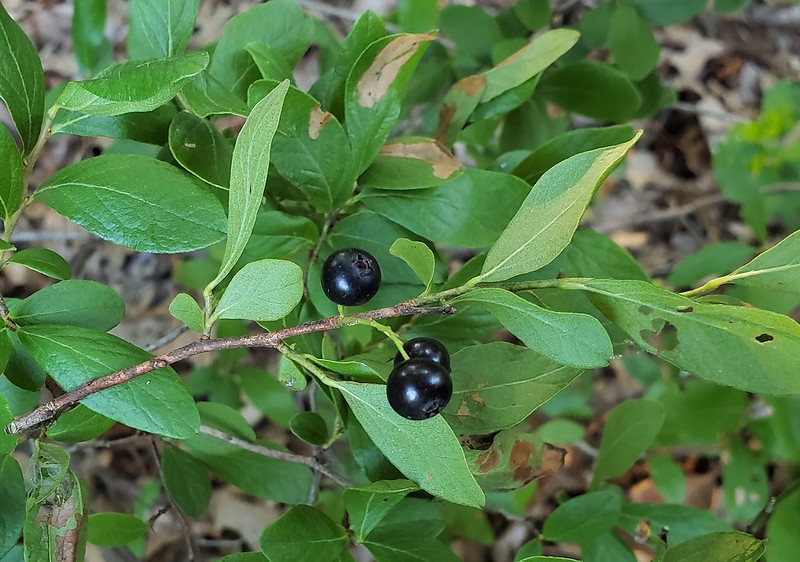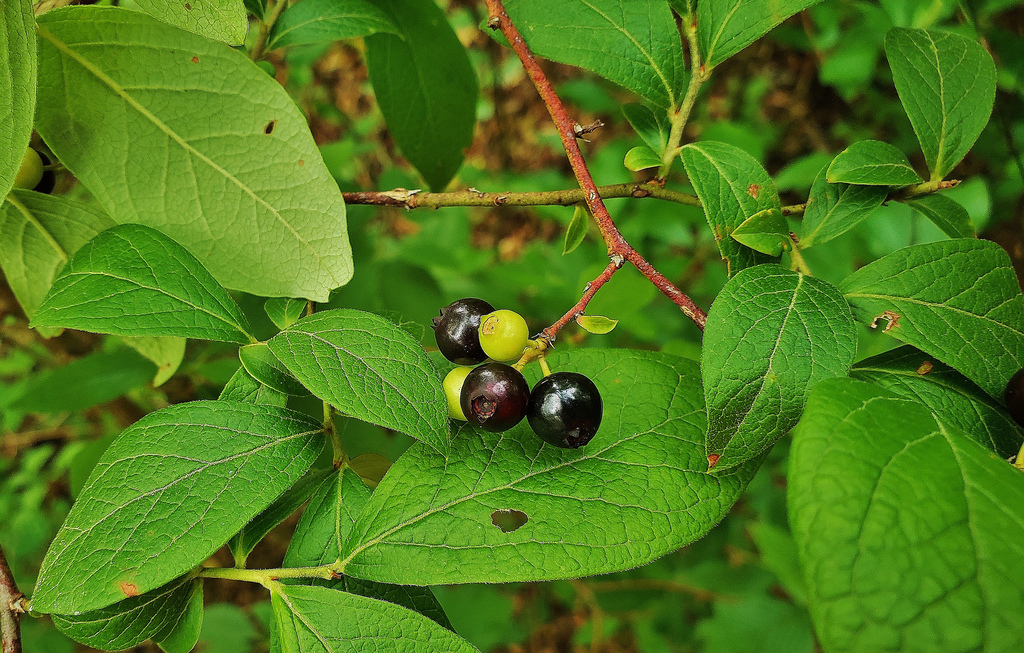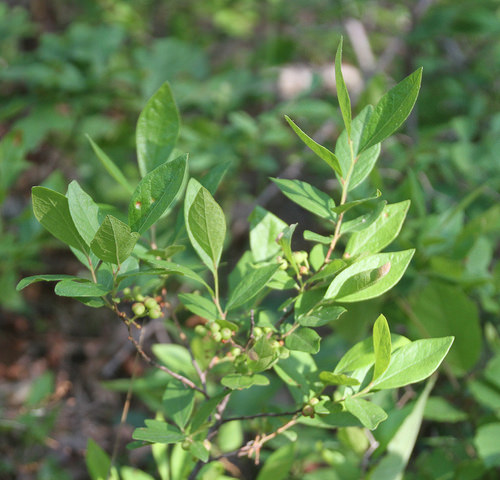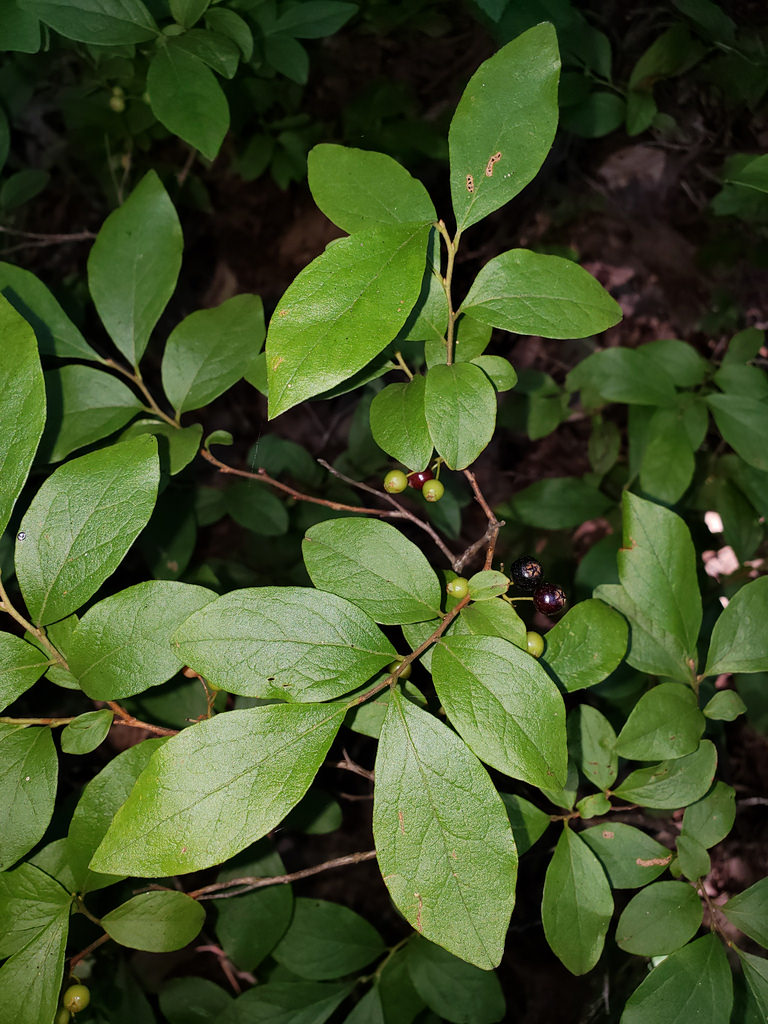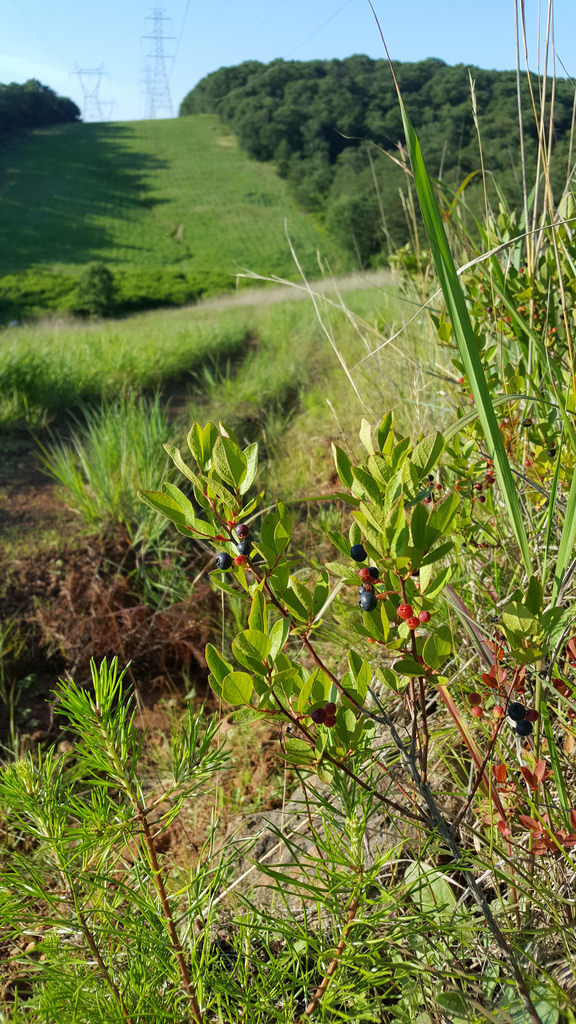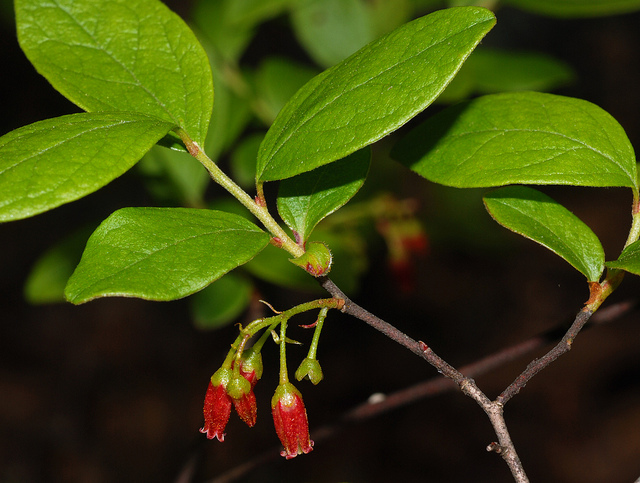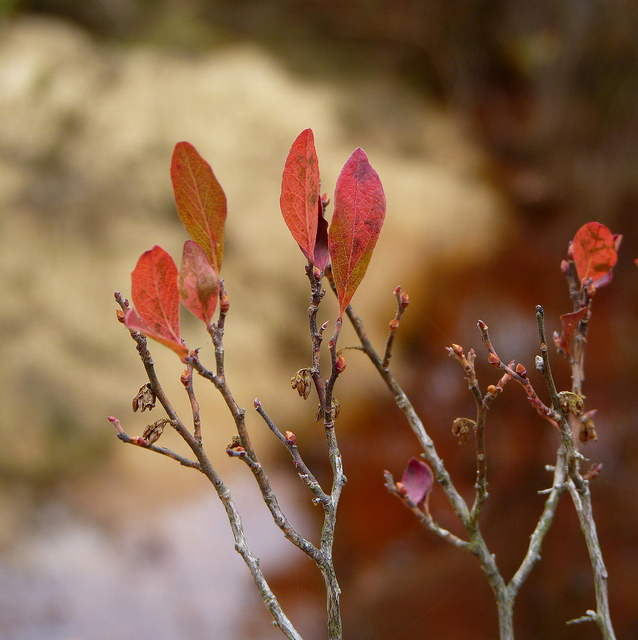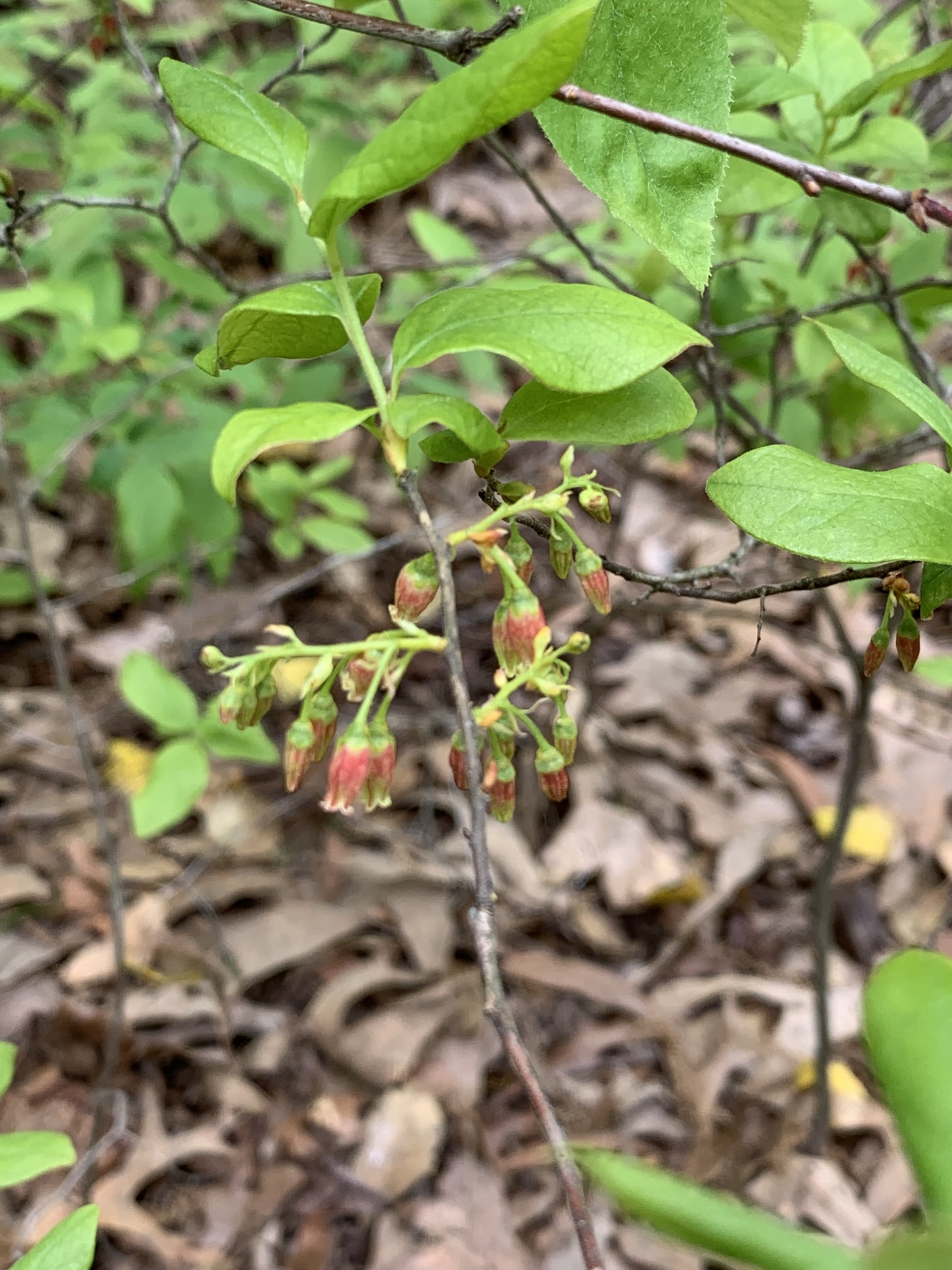

 Synonyms: Decachaena baccata.
Synonyms: Decachaena baccata.






















Black Huckleberry occurs throughout eastern North America. It is common across Maryland.
This low-growing shrub is often colonial and rhizomatous. It is easily identified from other blueberries and huckleberries by having resinous dots on both sides of the leaves. Leaf margins are entire and ciliate. The twigs are slender and pinkish red. Leaf buds are small and reddish. Flower buds are larger than leaf buds and are sprinkled with resin globules. The flowers are more slender than those of blueberries and more reddish. Bloom time is May-June. Fruits are black and shiny, not glaucous. Foliage turns red in autumn.
Dry forests.
Host plant for various moth species including Wavy-lined Emerald Moth, Coleophora gaylussaciella, Chain-dotted Geometer, Evergreen Bagworm Moth, Huckleberry Sphinx, Blueberry Leaftier Moth, Ancylis apicana, and Olethreutes baccatana (Database of World's Lepidopteran Host Plants).
There are 162 records in the project database.
| GA | AL | WA | FR | CL | MO | HO | BA | BC | HA | CE | PG | AA | CV | CH | SM | KE | QA | CN | TA | DO | WI | SO | WO |
